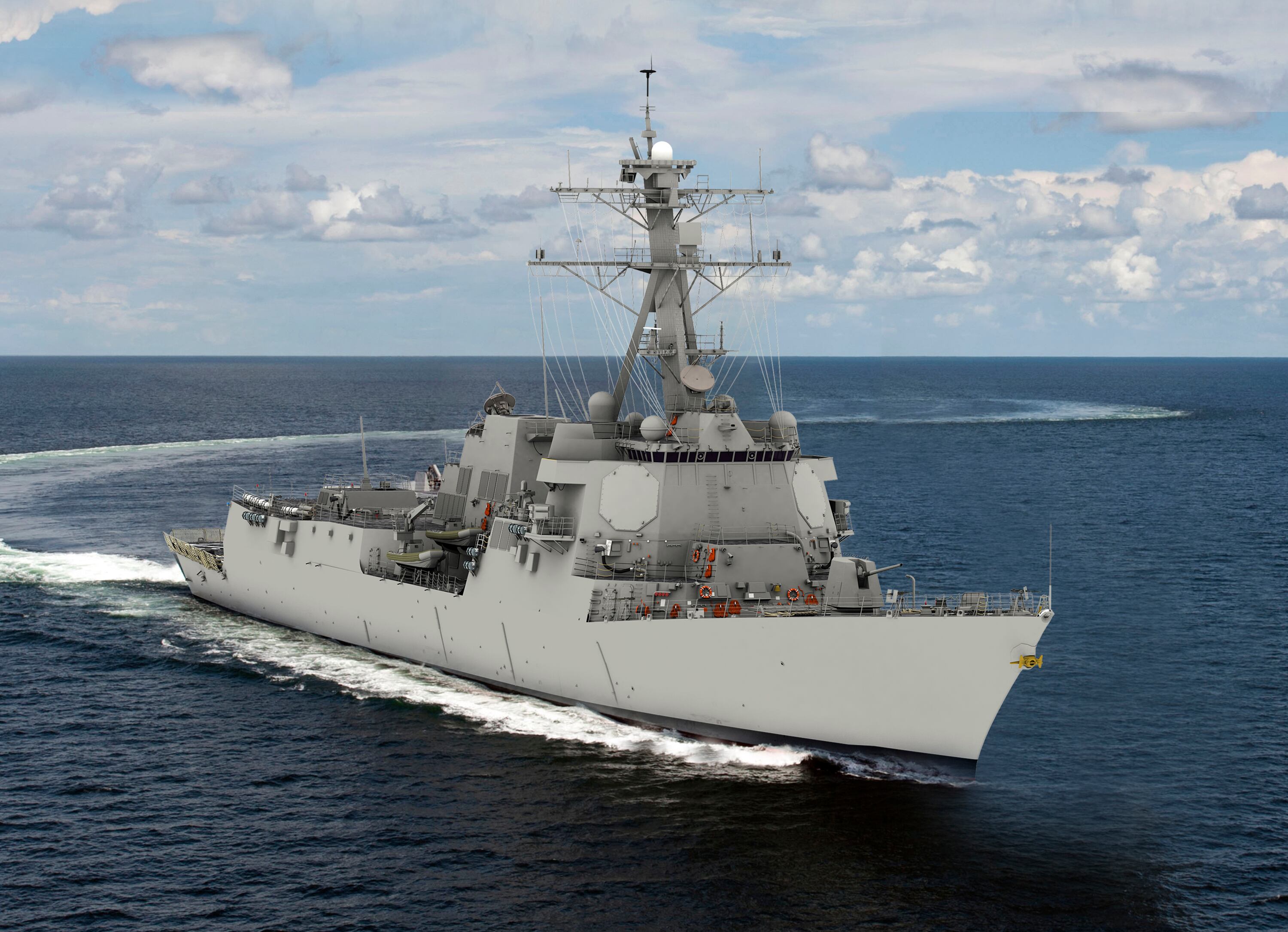General Dynamics Bath Iron Works in Maine began construction of the destroyer Harvey C. Barnum, one the last Flight II Arleigh Burke-class destroyers before shifting to the Flight III.
The shipyard plans to shave six months off Barnum’s construction time over the Daniel K. Inouye, which is running more than a year behind schedule, according to the Navy’s 2019 budget submission. The Inouye, DDG-118, is slated to take 52 months to construct. Barnum should take 46, the documents report.
The Barnum was awarded in June 2013, one of 10 ships that were awarded that year.
“This is an exciting time in the DDG 51 program as we celebrate the start of construction on DDG 124 and DDG 125,” said DDG-51 program manager Capt. Casey Moton, in a Navy release. “Both of these ships are named after Medal of Honor recipients and we are proud to honor their legacy with such capable warfighters.”
The construction schedule for DDGs at Bath starts to get a little wacky as the yard moves from Flight IIA to Flight III, which will integrate the power-hungry Air and Missile Defense Radar.
RELATED

Bath is getting ready to deliver DDG-116, the Thomas Hudner, after it breezed through acceptance trials in early May. Inouye, DDG-118, is about 18 months behind its original schedule for a number of reasons, including issues with getting the truncated Zumwalt class out of the yards. The Navy marked its keel laying Monday and its about 45 percent completed.
DDG-120 and 122, Carl Levin and John Basilone respectively, are both technically under construction but not very far along. Both those ships are expected to take less time to construct than Inouye, however: 49 months for Levin and 46 for Basilone.
Then things get a little strange.
Bath is then going to jump hull numbers to begin construction on DDG-127, the Gallagher (named for a Vietnam-era Navy Cross recipient), which will be a Flight II DDG and is slated to take about 51 months to complete. The first Bath Iron Works Flight III DDG will be DDG-126, which will deliver out of sequence and is expected to take 62 months to compete after start of construction.
The out-of-sequence delivery is likely the result of contract negotiations for the engineering change to Flight III, which is a significant redesign over Flight IIA, drug on for some months. General Dynamics Bath Iron Works felt change was significant enough that it injected risk into the program that the Navy should pick up the tab for.
The Maine congressional delegation repeatedly raised the maturity of the Flight III design during the negotiation process. Moton, the DDG-51 program manager, told Defense News in December that the Navy had done everything imaginable to limit the risk for the shipbuilders.
Huntington Ingalls, which was awarded the first Flight III (DDG-125, the Jack Lucas), began construction of the next-generation Burke in early May.
RELATED

Buying down risk.
In a December interview, Moton said that his team at Naval Sea Systems Command had used extensive 3-D modeling to make the design as complete as possible before sending to the shipyards for action.
“When I say 3-D modeling, I’m talking about the pipe hangers, or the brackets on the power panels and the foundations for the equipment — I mean it is to the detail that the shipbuilder needed to build,” Moton said. “So we believe that level of maturity is more than sufficient for the builder and the shipyard to do a fixed-price incentive contract. We also think it’s more than sufficient detail to move to a multiyear.”
The Navy is also doing a bunch of testing — the AN/SPY-6 (The AMDR radar) will soon be shipped to the Aegis testing facility in Moorestown, New Jersey, to begin integration with the new Baseline 10 software, Moton said. The back end hardware is already being tested with Baseline 9, he added.
The power and cooling systems are being tested in Hawaii with the AN/SPY-6, and both systems are working well. The major new components of the electrical system, which uses some components from DDG 1000, are being shipped to the Naval Surface Warfare Center in Philadelphia, Pennsylvania, for testing. (Those are the Leonardo DRS power conditioning modules, which convert AC power to DC, and the 4,160-volt gas turbine generators.)
The 3-D modeling is also being applied to the electrical system, Moton said.
“We did a very detailed 3-D model of the electric plant,” Moton said. “So we had already tested that model and we’d already done extensive testing of normal operations, casualty mode if, say, a system goes down.
“We’ve even done battle damage, taking a missile hit and figuring out [how] to restore the plant — we’re built to fight. We’ve already started making adjustments to the control software based on that testing, and that’s even before the first piece of equipment arrives in Philadelphia.”
As it stands today, Ingalls’ Flight III (DDG 125) will be the first to deliver in 2023, followed by Bath’s DDG 126 in 2024.
David B. Larter was the naval warfare reporter for Defense News.








